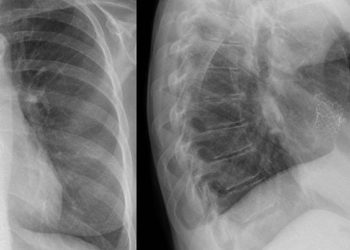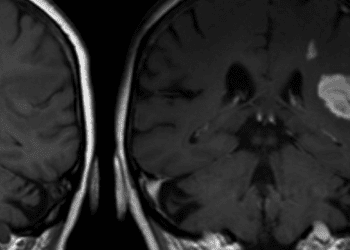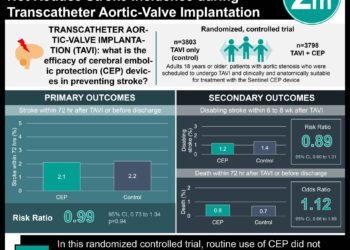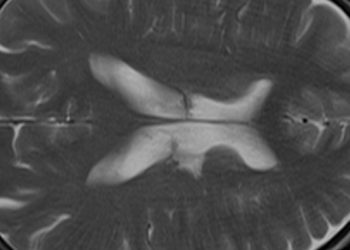Carotid endarterectomy and medical therapy reveal similar effectiveness in asymptomatic carotid stenosis
1. In patients with asymptomatic carotid stenosis, there was no significant difference between the comparative effectiveness of initial medical therapy versus carotid endarterectomy.
2. The absolute risk reduction was found to be less than half the risk difference of carotid endarterectomy related fatal and nonfatal strokes compared to 20 years ago.
Evidence Rating Level: 1 (Excellent)
Study Rundown: Symptomatic and asymptomatic patients with carotid stenosis have been effectively treated with carotid endarterectomy for decades. However, little is known about the effectiveness of initial medical therapy, given the latest pharmacological advances in the past decade, with patients who are asymptomatic. This study compares the effectiveness of both treatment regimens preventing 5-year risk of fatal and nonfatal strokes. The results indicate that initial medical therapy may be an appropriate treatment regimen given the presence of perioperative risks with carotid endarterectomy among other factors.
This study successfully collected comprehensive data from a large data base offering a strong sample size and consequently providing qualitative results that mimic real-world settings. The study was limited by the lack of inclusion of perioperative strokes in the analysis of perioperative complications in carotid endarterectomy that resulted in death. Secondly, the study data was pulled using specific ICD-9 codes and the lack of coding for a given case scenario may have resulted in omission of the case data from the study. Lastly, the study cannot be generalized to the population at large as it was mainly analyzing veteran data.
Click to read the study in JAMA
Relevant Reading: Endarterectomy for Asymptomatic Carotid Artery Stenosis
In-Depth [systematic review and meta-analysis]: This study used data from the US Department of Veterans Affairs (VA) and Medicare and was conducted during August 28, 2018 to March 2, 2020. In this study, a total of 219979 veterans were identified of which, 5221 were discovered to have asymptomatic carotid stenosis. Participants were enrolled if they met the following criteria: carotid stenosis of 70% or greater (or a qualitative description of near occlusion, critical stenosis or severe stenosis), visited a VA facility at least once between January 1 2005 and December 31 2009, aged 65 or older, and completed one type of diagnostic carotid imaging. Study data such as patient demographics, vital signs, and laboratory data was extracted directly from the VA Corporate Data Warehouse and Medicare Data. The Suicide Data Repository was also used to identify death and cause of death, as necessary. A medical chart review was also completed followed by data analysis. In summary, carotid endarterectomy and medical therapy revealed similar effectiveness in patients with asymptomatic carotid stenosis.
Image: PD
©2020 2 Minute Medicine, Inc. All rights reserved. No works may be reproduced without expressed written consent from 2 Minute Medicine, Inc. Inquire about licensing here. No article should be construed as medical advice and is not intended as such by the authors or by 2 Minute Medicine, Inc.







